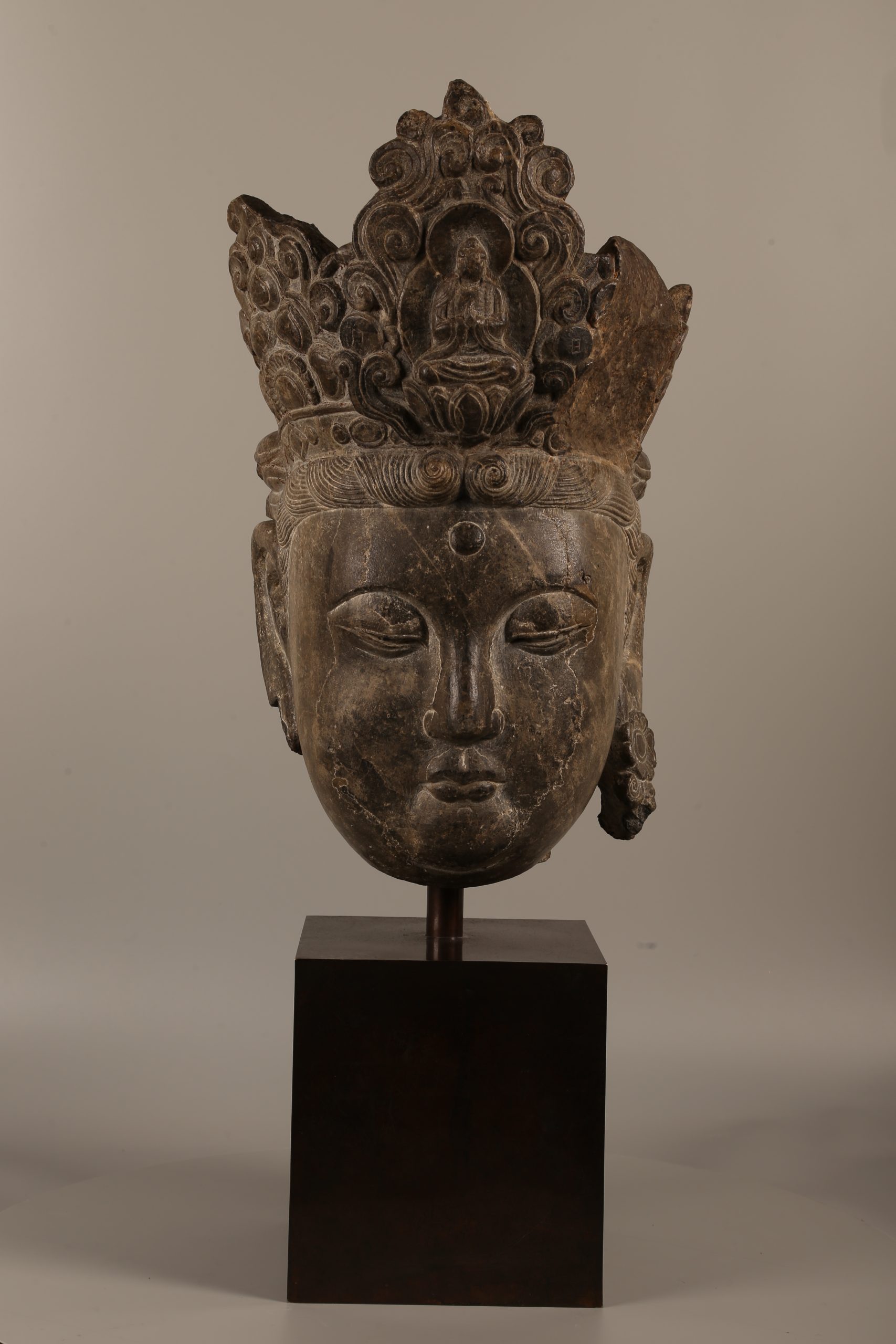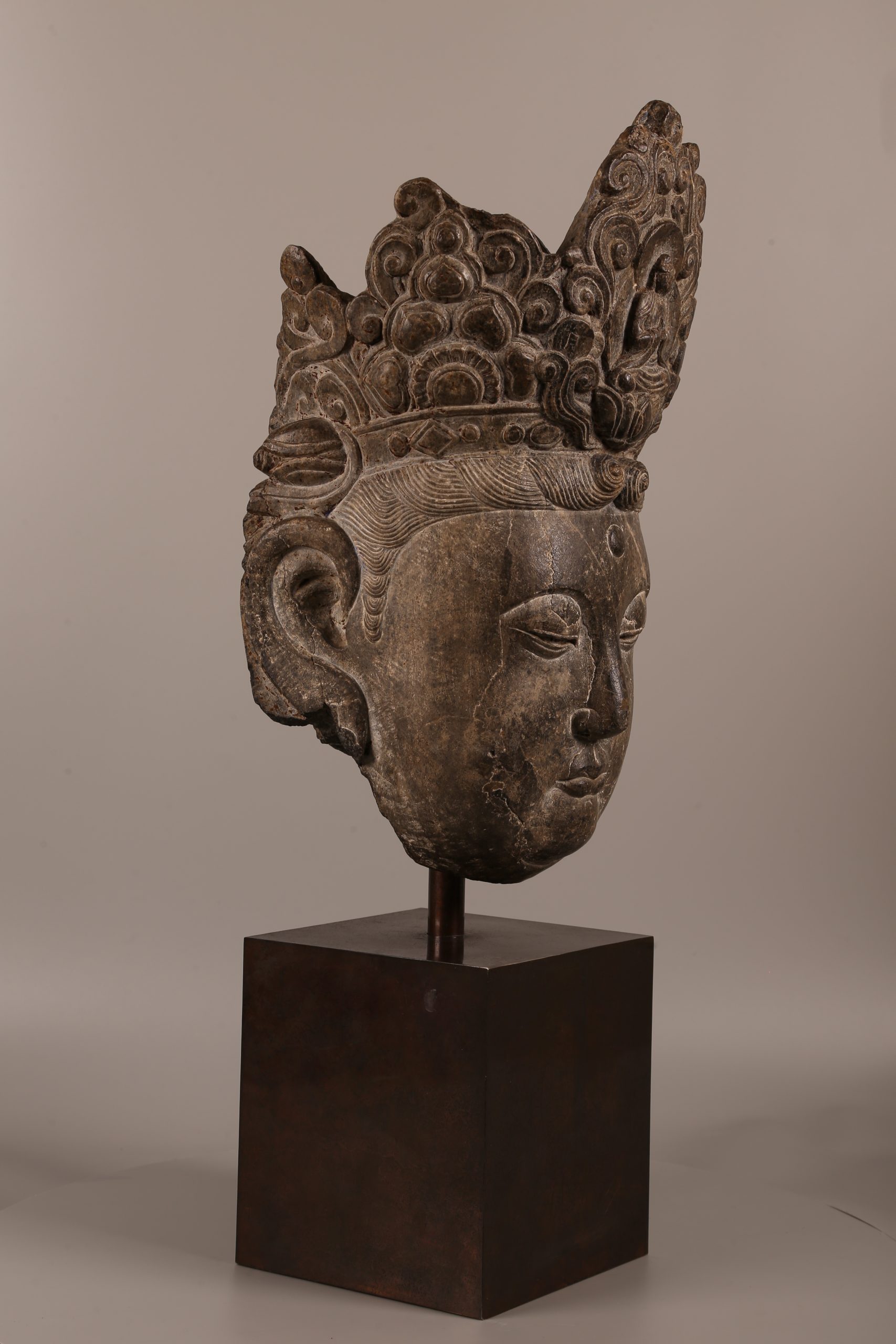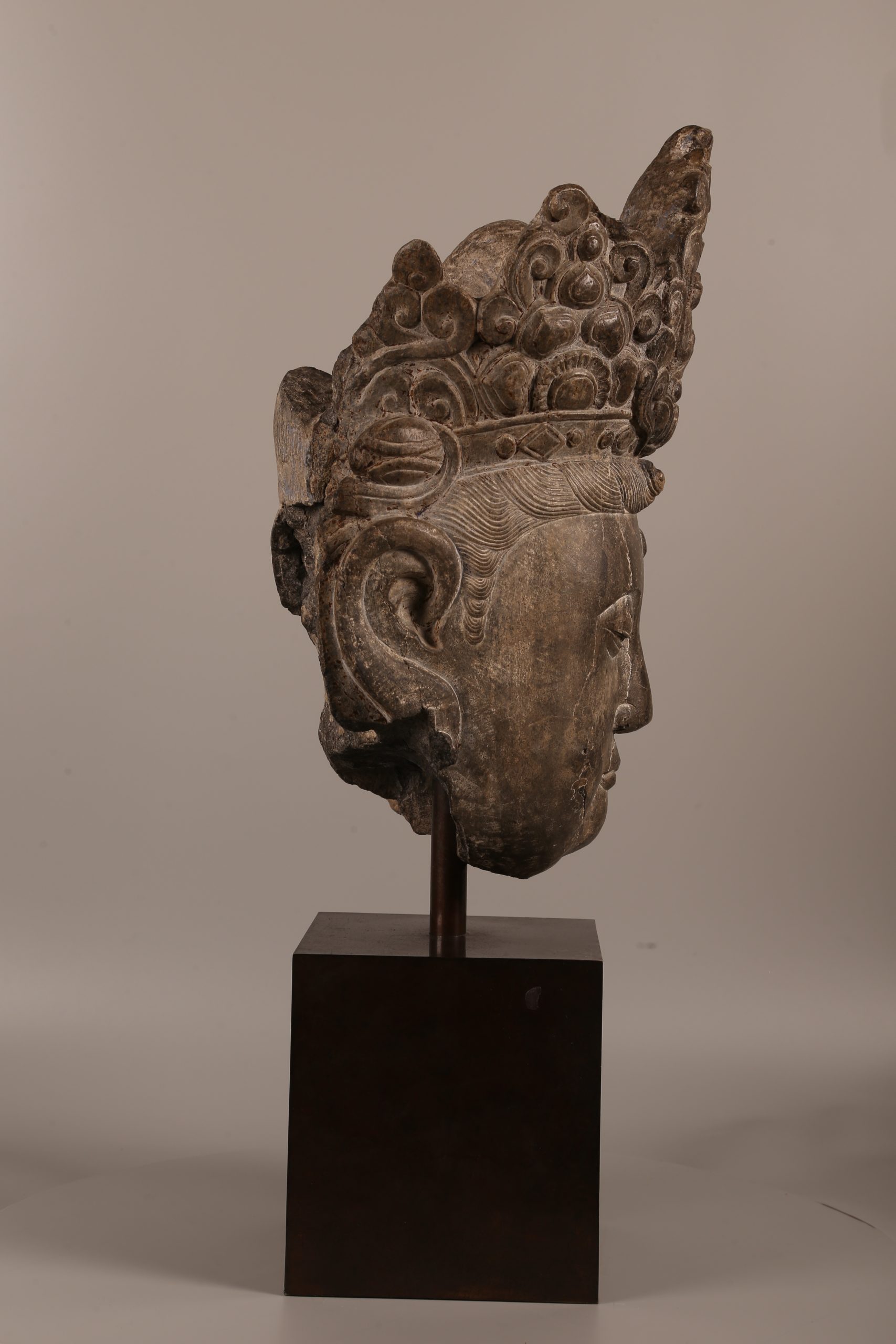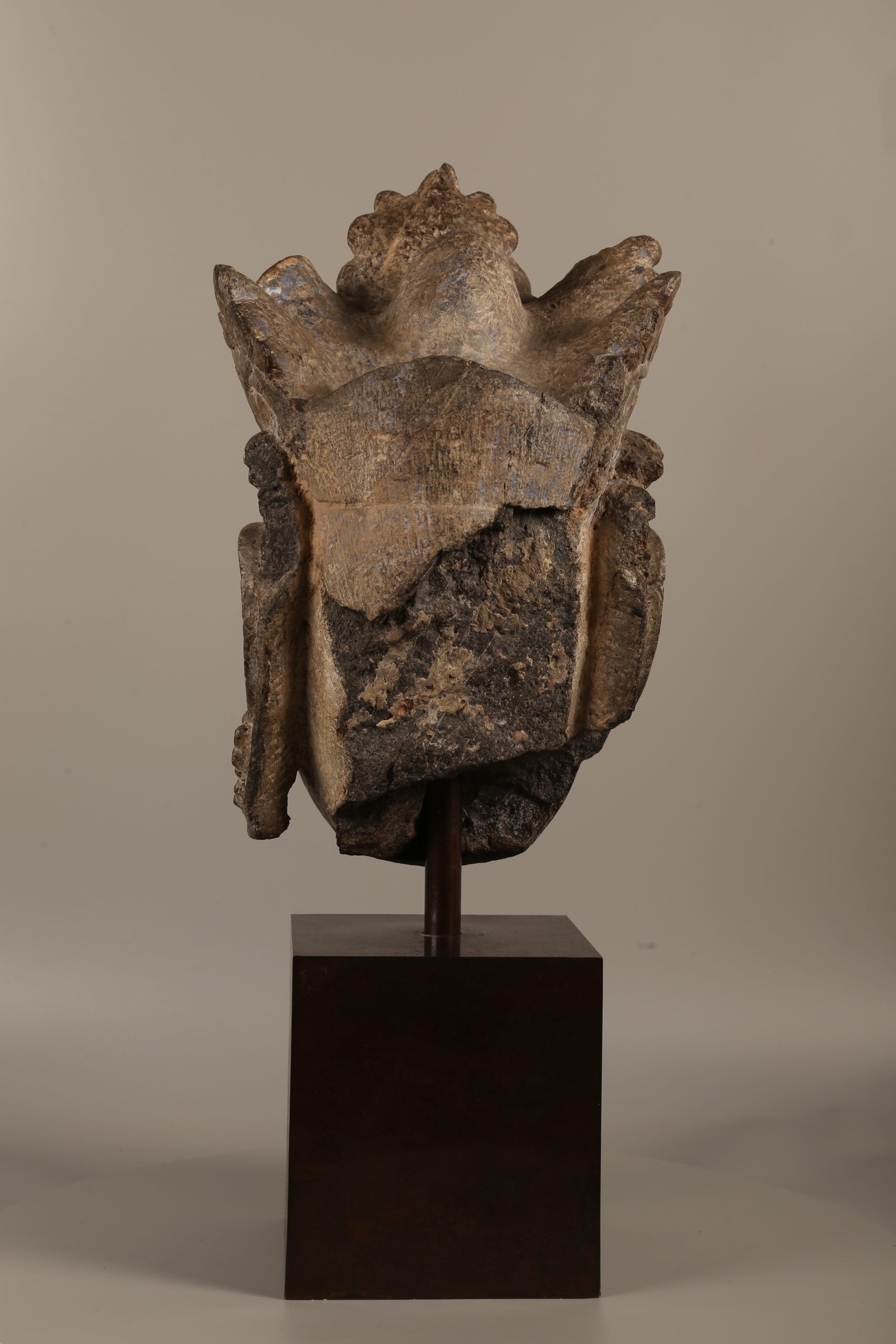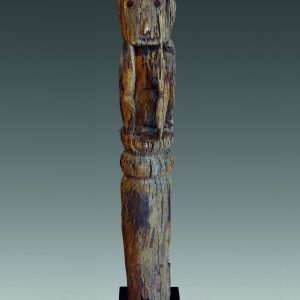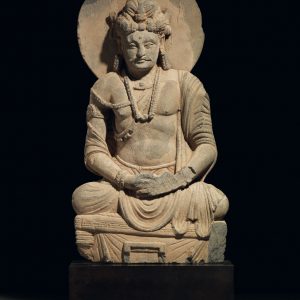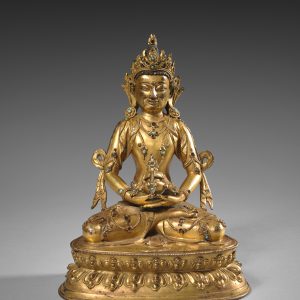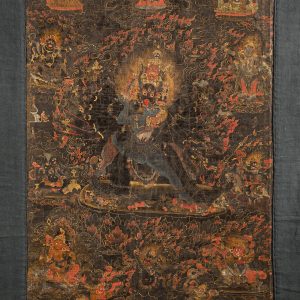Guanyin Head
Limestone
China
Ming period, 15th century (1368-1644)
H. 35 cm or 14 inch
360° View
Description
A representation of Guanyin
Chinese exception in our selection, this remarkable head is a representation of the goddess Guanyin, the feminised aspect of the bodhisattva (i.e. a being who has attained enlightenment, but who renounces Nirvana to help other living beings attain enlightenment) Avalokiteśvara. Indeed, the latter was worshipped fervently throughout Asia, as it was believed that he gave children to barren women, and sons to families with only daughters.
In China, after the 10th century, among the common people, Avalokiteśvara would be confused with a Taoist goddess known for protecting children from childhood diseases. This goddess goes by various names including the epithet Nainai Niangniang. Under this influence of mixed beliefs, Avalokiteśvara metamorphosed into Guanyin, a feminised aspect of the Bodhisattva, and was elevated in China to the rank of Goddess of Mercy.
The finesse of an ornamental sculpture
Guanyin is depicted here with a very gentle, serene and meditative expression. Her hair is delicately curled on top of her forehead, surmounting the ūrṇā (symbol of vision in the divine world). Her arched eyebrows fall on almond-shaped eyes with half-closed lids. The mouth is fleshy, carefully hemmed. The cheeks and chin are round, in an almost juvenile appearance. The ears are adorned with carved flowers, acting as jewels, while the head is split by a high tiara, decorated in its centre with a figure of Buddha sitting in Namaskara Udra on a lotus, surrounded by a mandorla. It is probably a representation of his master, the Buddha Amitābha.
Around it are carved scrolls and lotus petals. On either side of the mandorla are medallions engraved with the ideogram of the sun on the left and the moon on the right. The whole forms a rich and dynamic whole.
A goddess with a popular cult
Guanyin is an extremely popular goddess; known to cure all diseases, she also has a protective function. She is very popular and is often depicted in private homes, but also in Chinese public statuary. Like these various representations, this imposing head radiates an aura of serenity that is typical of the goddess; we cannot recommend this remarkable piece enough.
Provenance : English private collection.

